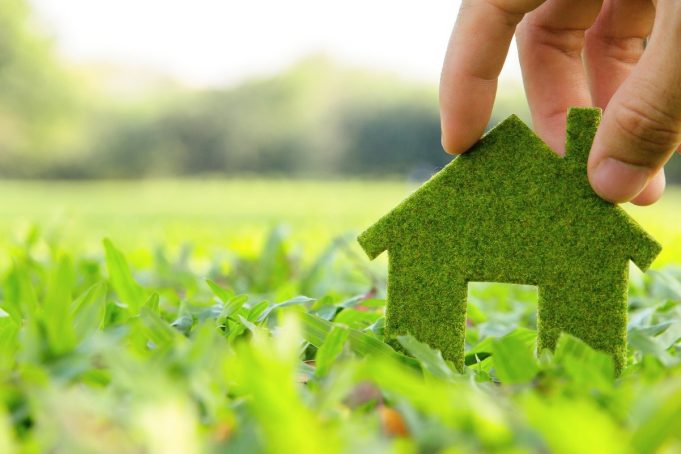Humanity has become acutely aware of the effect of our lifestyles on the environment as the threats of climate change, melting polar regions, and global warming loom large. Countries around the world have started to implement measures to reduce CO2 emissions and find sustainable sources of energy. Most households have joined in the race to save our planet for future generations.
If you don’t yet have an Eco-Home Plan, you may not have exhausted all your opportunities to play your part in preserving the environment. We outline some simple ways you can create an eco-friendly home.
Do Your Laundry in Cold Water
Not only does cold water do a better job of preserving your clothes for longer and keeping colours bright, but it also conserves almost 90% of the energy expended by a hot washing machine cycle. This simple step will reduce carbon dioxide emissions, which, along with single-use plastics, contribute the most to pollution.
Dry Your Clothes Outside
Whenever the weather permits, you should forego the tumble dryer in favour of drying your laundry in the sun and wind. This also protects your clothing. If your garden lacks the length for erecting washing lines, a windy dryer takes up far less space and can still take as much washing as three lines.
Indoor drying racks can be placed on a deck or your juliet balcony if your garden will not accommodate these options. Another alternative is to hang washing inside on rainy days. It takes longer to dry so you should avoid heavy items like bedding and towels and stick to the essentials.
Saving On Lighting
LED bulbs are an eco-friendly substitute for incandescent bulbs. They use less electricity, saving you money. LED bulbs last longer than incandescent bulbs.
Recycling
Two items you need to purchase or make are a recycle bin and a compost bin. Having these bins encourages you to recycle, and once it becomes a habit, you won’t even think about it.
Toss all leftovers and fruit and vegetable peels into your compost bin to create useful fertiliser. Even if you don’t have a garden to use it in, you can grow fresh herbs indoors. Place them in small pots near a window that gets adequate sunlight. Cooking with herbs will add a whole new dimension to your meals.
Using a Water Filter
Single-use plastic is an environmental pollutant. If you purchase water to ensure better drinking quality, you are adding to landfills. A water filter will purify the water from your tap and make it drinkable. You can boil this filtered water to make tea or coffee or to use in cooking.
Eco-Friendly Flooring
If you decide to upgrade your flooring or are adding new floors in a recently constructed home, there are eco-friendly options. These consist of renewable resources. They must also be long-lasting so that you do not need to replace them every few years. Good choices are bamboo, cork, linoleum, and engineered hardwood. Cork repels allergens such as mites and mould, keeping the air in your home cleaner.
Insulation
Plant-based polyurethane rigid foam is made from bamboo, hemp, and kelp. Its rigidity makes it perfect for ceiling insulation. Along with the heat resistance it provides, it is also useful for sound insulation. This product deters pests and mould.
Building with Recycled Wood
Whether you are building a new home, creating an outdoor shed, or constructing a tree house, recycled wood is preferable to new wood. The latter requires the cutting down of trees that our planet desperately needs. But recycled wood can be repurposed for many of your construction projects without cutting down growing trees. There are also other green building materials that will allow you to build guilt-free as they promote sustainable energy. These resources provide insulation from cold and hot weather so that an aircon or heater is not needed, saving on electricity, gas, and oil.
Indoor Pot Plants
Indoor pot plants are the perfect choice for bringing more oxygen into the home. They take in CO2 and emit oxygen into the air. Try to place several pot plants in each room of your house. Not only will they look great, but they will be promoting your good health.
DIY Kitchen Remodelling
If you are tired of your old kitchen and want to give it a new look, you need not expend a lot of money doing so. Recycle the wood from your existing cupboards and drawers to create a brand-new set of cabinets. You can buy some new fixtures such as door handles and drawer knobs at a small cost.
When Do You Need an Ecological Survey?
Most development projects require an ecological survey. This is done to measure the impact the development will have on the environment. The assessment needs to be included with your application for planning permission to your local council.
If the appraisal highlights any negative consequences of the proposed development, it must be accompanied by a plan to mitigate these damages. Additionally, the Environmental Act stipulates that developers must take steps to achieve a Biodiversity Net Gain (BNG) of 10% for each site being developed. Thus, you will have to measure the current biodiversity and provide a plan to increase it. This can be done on-site or off-site if the former is not possible.
If you need an assessment to get planning permission, Ecology Surveys have 15 years of experience dealing with ecological surveys. They provide this service across the UK. Their focus is on what is needed to get planning permission for the development of land.
Examples of home projects that require ecological surveys are: constructions erected before 1914 that are within 400 metres of woodland or water; buildings that have gable ends or slate roofs that were constructed before 1914; constructions featuring weather boarding or hanging tiles that are within 200 metres of woodland or water; rows of trees and field hedgerows that form an ecosystem with woodland or water; and detached buildings predating 1960 that are within 200 metres of woodland or water.
Every household needs an Eco-Home Plan. Drawing on our recommendations and conducting research, you can devise and implement your plan along with other responsible world citizens.














